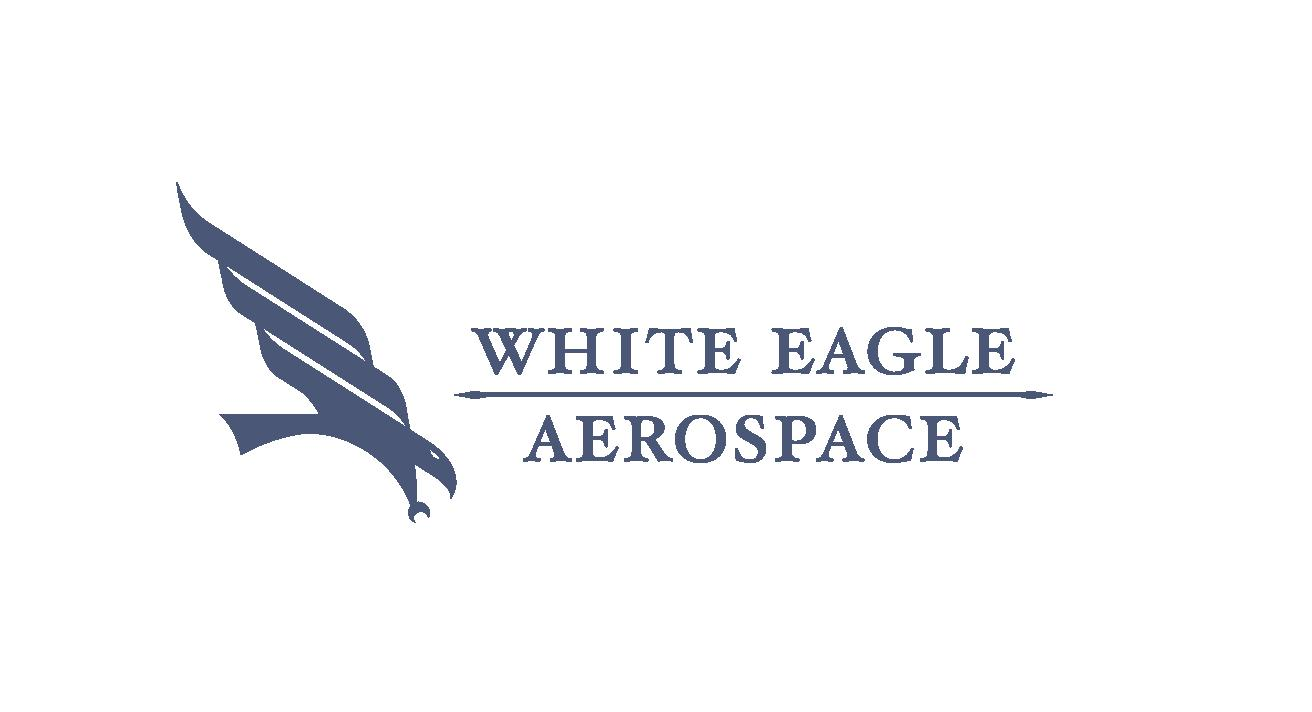
America’s New Shield Just Got Funded — And the Aerospace Industry Is About to Take Off 🚀
✅ Major Defense Funding Secured
In a decisive move to strengthen U.S. homeland security, Congress has approved full funding for the new “Golden Dome” missile defense system as part of the recently passed tax bill.
This ambitious project marks a historic investment in layered, next-gen missile defense, drawing on advanced technologies to counter today’s most complex airborne threats.
For aerospace professionals and defense contractors, this moment opens the door to huge opportunity—and at White Eagle Aerospace, we’re ready to meet it.
🌀 What Is the Golden Dome?
Think Iron Dome meets American innovation.
The Golden Dome is a comprehensive, multi-layered missile shield designed to:
- 🛰️ Track and intercept hypersonic glide vehicles
- 🚀 Neutralize ICBMs, cruise missiles, and loitering munitions
- 🧠 Utilize real-time AI threat detection and radar integration
- 🌎 Protect the entire continental U.S.
Unlike legacy systems, Golden Dome will leverage space-based tracking, autonomous defense logic, and high-speed kill vehicles to create an impenetrable shield in today’s threat environment.
🎯 Why It Matters: A Surge of Opportunity for Aerospace Pros
This isn’t just a government program — it’s a launchpad for thousands of technical careers and contracts. The system’s complexity demands elite engineering in every discipline, including:
🛩️ Flight Mechanics & Guidance Systems
🔥 Hypersonic Thermal Analysis & Reentry Modeling
📡 Sensor Fusion & EW Countermeasures
🚀 Advanced Propulsion and Rocket Design
🧪 System Testing, Validation & Simulation
Golden Dome will require top minds and fast action — and that’s exactly what we support.
📚 Where We Fit In: White Eagle Aerospace Is Mission-Ready
At White Eagle Aerospace, we specialize in preparing engineers for high-stakes defense projects. We’ve trained professionals for DARPA, MDA, the U.S. Navy, and prime contractors like Lockheed Martin, Raytheon, and Northrop Grumman.
Here’s how we’re aligned with Golden Dome right now:
✅ Missile Aerodynamics & Intercept Mechanics Courses
✅ Flight Test Engineering & Propulsion System Training
✅ Technical Consulting & Mission Readiness Workshops
✅ Career Mentorship for Aerospace Professionals
Whether you’re upskilling your team or preparing for program onboarding, we’re the trusted partner behind tomorrow’s defense leaders.
📡 Watch This Space — Big Things Are Coming
The Golden Dome will roll out fast — and we’re keeping a close eye on:
🔸 Milestone releases
🔸 Subcontracting opportunities
🔸 Key contractor partnerships
🔸 Engineering skill demands
This is the beginning of a new defense era, and we’re helping shape it.
🚀 Let’s Build the Future of Missile Defense — Together
If you’re ready to support the Golden Dome or want your engineering team prepared for what’s next in missile defense…
👉 Explore our programs at WhiteEagleAerospace.com
👉 Or contact us directly to discuss training, consulting, or partnerships.
🦅 White Eagle Aerospace — Elevating engineers to meet America’s boldest aerospace challenges.
🛰️ The International Space Station: Humanity’s Engineering Marvel in  Orbit
Orbit
At 250 miles above Earth, circling the planet at 17,500 mph, the International Space Station (ISS) is more than just a spacecraft—
it’s a floating laboratory, a symbol of international cooperation, and one of the most ambitious engineering projects in history.
Let’s break down what makes this orbiting outpost so extraordinary. 👇
🌍 Speed & Sunrises: Life at 17,500 MPH
The ISS completes one full orbit around Earth every 90 minutes.
That means astronauts onboard witness 16 sunrises and 16 sunsets every single day. ☀️🌒
It’s the ultimate frequent flyer lifestyle—only at hypersonic speeds. ✈️💫
🧠 Built in Space, Piece by Piece
The ISS isn’t one spacecraft—it’s a modular space station, assembled in orbit over the course of more than 30 missions.
-
Over 100 components joined together in microgravity
-
The structure spans the length of a football field
-
Weighs more than 900,000 pounds
Its construction is a testament to precision, perseverance, and engineering excellence.
🌐 A Global Effort
The ISS is a collaboration between five space agencies:
NASA (USA), Roscosmos (Russia), ESA (Europe), JAXA (Japan), and CSA (Canada). 🌎
Despite cultural and political differences, these agencies have worked side-by-side to create a continuous human presence in space since November 2000.
The ISS is living proof that when nations collaborate, humanity can reach the stars.
🔬 A Lab Like No Other
Every day, astronauts aboard the ISS conduct experiments in:
-
Medical research
-
Materials science
-
Fluid dynamics
-
Space agriculture
-
And more…
Microgravity offers a unique environment that allows scientists to explore questions we can’t answer on Earth.
💬 What Would You Send to Space?
If you had the chance to send one experiment to space, what would it be?
Something to cure disease? Test new materials? Or maybe something completely out of this world? 🌌
👇 Drop your ideas in the comments below—we’d love to hear your thoughts!
The B-2 Spirit: So Stealthy, It Ducks Radar Like a Seagull 🛸
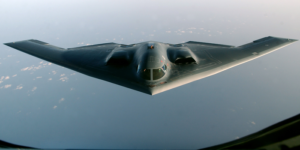
How can something as massive as a 172-foot-wide bomber sneak past some of the world’s most advanced radar systems?
How does a multibillion-dollar aircraft leave a radar signature smaller than a ping pong ball?
Welcome to the world of the B-2 Spirit Stealth Bomber—an engineering marvel that redefined what it means to fly under the radar… literally.
Wait… Less Detectable Than a Bird? 🐦
Yep, you read that right.
Despite its size, the B-2 reflects less radar energy than a seagull. That’s not science fiction—it’s aerospace engineering at its finest. Thanks to its flying wing design, radar-absorbing materials, and strategic heat shielding, the B-2 can cruise through enemy airspace virtually undetected.
🏓 Its radar cross-section? Roughly the size of a ping pong ball.
🤯 How is that even possible?
What Makes the B-2 So Invisible?
🔍 Curious how the B-2 pulls off this vanishing act? Here’s a breakdown:
-
Is it the shape? Absolutely. Its smooth, curved wing eliminates the sharp angles that usually reflect radar waves.
-
What about materials? Specialized RAM (Radar Absorbent Material) soaks up radar energy instead of bouncing it back.
-
Engines? Hidden. Buried deep inside with covered exhaust ports to avoid detection by heat-seeking tech.
This isn’t just stealth—it’s strategic invisibility designed from the ground up.
🕶️ What’s the Big Deal About Being Stealthy?
Imagine flying deep into enemy territory—and they don’t even know you’re there. The B-2’s stealth enables it to deliver precision strikes, gather intel, and support missions that would be impossible for traditional aircraft.
So here’s a question:
In an age of advanced air defense systems, can any other aircraft match what the B-2 can do?
––––––––––––––––––––––––––––––––––––––––––––––––––––––––––––––––––
🛡️ Can Anything Match the B-2?
Even after 30+ years in service, the B-2 Spirit is still in a league of its own.
Other aircraft like the F-35 or the upcoming B-21 Raider offer stealth features, but none combine long-range, heavy payloads, and radar evasion like the B-2.
No other bomber today can fly as far, hit as hard, and stay as hidden.
For now, the B-2 remains the stealth benchmark—and the sky’s quiet champion.
🦅 A Legacy That Still Leads the Skies
If you love aerospace, stealth tech is where science meets strategy. And the B-2? It’s still one of the most advanced and secretive platforms in existence—even decades after its debut.
It challenges what we think is possible.
It pushes the limits of material science, aerodynamics, and military engineering.
It asks: What else can we make invisible?
🧠 Want more aerospace mind-benders?
Come explore the bleeding edge of flight science with us at White Eagle Aerospace.
🚢 USS Carl Vinson & F-35C Lightning II: Projecting Naval

Power in the Red Sea
As global tensions simmer in key maritime corridors, the United States Navy is reinforcing its presence in one of the world’s most strategically vital waterways: the Red Sea. Leading this mission is the USS Carl Vinson (CVN-70), accompanied by the cutting-edge F-35C Lightning II—America’s most advanced carrier-based stealth fighter.
This deployment highlights the seamless integration of air and sea power, projecting strength, ensuring maritime security, and maintaining stability in a region crucial to global trade and geopolitical interests.
✈️ The F-35C Lightning II: The Navy’s 5th-Generation Force Multiplier
As the carrier variant of the Joint Strike Fighter program, the F-35C is engineered specifically for maritime operations. It features:
-
🔹 Foldable wings for carrier deck operations
-
🔹 Larger wingspan and landing gear designed for catapult launches and arrested landings
-
🔹 Increased fuel capacity and range for deep-penetration strike missions
-
🔹 Stealth capabilities and advanced sensor fusion for unmatched situational awareness
The F-35C is not just a fighter—it’s a data node, sharing real-time information with surface ships, other aircraft, and ground forces, creating a unified combat picture across domains.
⚓ USS Carl Vinson (CVN-70): A Floating Fortress
The USS Carl Vinson, a Nimitz-class nuclear-powered aircraft carrier, is a formidable presence in any theater. With over 60 aircraft onboard, including F/A-18 Super Hornets, E-2D Hawkeyes, and now the F-35C, it represents a multi-mission power projection platform.
Key capabilities include:
-
🛡️ Integrated air defense and strike operations
-
⚙️ Rapid deployment of carrier strike group assets
-
🌐 Forward presence to support allies and deter adversaries
-
🔋 Nuclear propulsion for sustained, high-endurance missions
In an era of contested domains, the Carl Vinson remains a symbol of U.S. naval dominance and readiness.
🌍 Securing the Red Sea: Why It Matters
The Red Sea is more than a waterway—it’s a global artery. Nearly 10% of global trade transits through this region via the Bab el-Mandeb Strait, connecting the Mediterranean to the Indian Ocean. Instability in this region threatens the free flow of commerce and access to critical energy supplies.
By deploying advanced naval assets like the Carl Vinson and the F-35C, the U.S. Navy:
-
✅ Strengthens maritime domain awareness
-
✅ Deters hostile threats and non-state actors
-
✅ Supports freedom of navigation operations
-
✅ Reinforces regional partnerships and interoperability
🔍 A Glimpse Into the Future of Naval Aviation
This mission represents more than just presence—it reflects a shift in how 21st-century naval warfare is being conducted. Platforms like the F-35C bring stealth, connectivity, and precision into environments that demand both technological superiority and tactical agility.
With adversaries developing anti-access/area-denial (A2/AD) strategies, the synergy between next-gen aircraft and modern carriers ensures that U.S. forces retain air superiority and operational reach wherever they’re needed most.
🧭Strategy Meets Technology
The deployment of the USS Carl Vinson and its air wing—now enhanced by the F-35C Lightning II—demonstrates how the U.S. Navy is evolving to meet modern threats with unmatched capabilities and forward-thinking strategy.
This operation is a powerful reminder that the intersection of engineering excellence, operational readiness, and geopolitical awareness is where aerospace and naval innovation truly shine.
📢 Join the Conversation
What do you think about the evolving role of naval aviation in global security? Share your thoughts in the comments below.
🚀 A Bear, a Supersonic Jet, and a Historic Ejection: The
Untold Story of Yogi and the B-58 Hustler
On March 21, 1962, the U.S. Air Force conducted one of the most unusual—and groundbreaking—tests in aerospace safety history. At the center of this mission? Not a pilot, not a mannequin… but a black bear named Yogi.
This remarkable event was part of a critical effort to validate the safety of ejection systems at supersonic speeds, specifically for the Convair B-58 Hustler, the Air Force’s first operational supersonic bomber.
✈️ The Mission
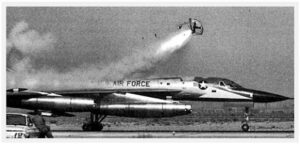
-
Aircraft: Convair B-58 Hustler
-
Speed: Approximately Mach 1.3 (870 mph)
-
Altitude: 35,000 feet
-
Objective: Test the survivability and performance of a supersonic escape capsule
The B-58, with its sleek delta-wing design and capability to exceed Mach 2, posed unique challenges for pilot safety. Traditional ejection seats were insufficient at such high speeds and altitudes. To address this, engineers developed a fully enclosed ejection capsule—a major leap forward in aircrew protection.
🐻 Why Use a Bear?
To conduct a realistic and biologically relevant test, the Air Force needed a subject that closely matched the size, weight, and physiological response of a human pilot. A black bear—nicknamed Yogi—was selected due to its mass and tolerance for high-stress environments.
Yogi was securely placed in the escape capsule and flown aboard the B-58 to test conditions. At altitude, the capsule was ejected at supersonic speed, initiating a sequence of shock-absorbing, parachute-deploying, and landing systems.
🌟 The Outcome
The test was a resounding success. Yogi survived the supersonic ejection, and the capsule’s systems performed as designed, validating the technology. This momentous event proved that ejection from a high-speed aircraft could be safe and survivable, paving the way for future innovations.
🛡️ Lasting Impact on Aerospace Safety
Yogi’s historic ride contributed to several major advances in pilot survivability:
-
✅ Validated ejection capsule design for high-speed bombers
-
✅ Improved shock absorption technology
-
✅ Laid the groundwork for zero-zero ejection seats—capable of safely ejecting at zero altitude and zero airspeed
Though unconventional, this test was a critical moment in aerospace safety development. It also highlights the extraordinary lengths engineers have gone to in order to protect lives in extreme flight conditions.
👨✈️ A Legacy of Innovation
Today, advanced ejection systems—some direct descendants of that 1962 test—continue to save pilots’ lives across the globe. The story of Yogi the bear may sound like aviation folklore, but it remains a testament to creative problem-solving, engineering courage, and the pursuit of safer skies.
🚀 The Silent Symphony of Space: Why the Universe Has No Sound

When we picture space, we often imagine powerful rocket launches, supernovae explosions, and fiery cosmic collisions. These events are full of energy and motion, so you might expect space to be filled with sound. But here’s the surprising truth:
Space is completely silent.
Unlike Earth, where sound travels through air and water, space is a vacuum. There are no molecules to carry sound waves, which means even the loudest cosmic events occur in complete silence. Whether it’s a rocket piercing the atmosphere or a star going supernova, the universe remains eerily quiet.
🧑🚀 How Do Astronauts Communicate?
Despite the silence, astronauts communicate effectively in space using radio waves. Unlike sound, radio waves are electromagnetic and don’t require a medium like air to travel.
These waves allow astronauts to:
- Talk with each other on board the spacecraft
- Maintain contact with mission control on Earth
This technology ensures real-time communication, even hundreds of miles above Earth.
🚀 What Happens to Sound During Rocket Launches?
On Earth, rocket launches are deafening. We hear the thunderous roar of engines as they ignite and lift off.
But as rockets ascend and enter the vacuum of space:
- The atmosphere thins
- Sound waves lose their medium
- The roar fades to complete silence
The drama remains visual—but not audible.
🌌 Is Space Truly Silent?
While we can’t hear in space the way we do on Earth, the universe isn’t entirely without “sound.”
Scientists use instruments to detect:
- Vibrations from solar flares
- Ripples from black hole mergers
- Cosmic microwave background radiation
These signals are converted into data—and sometimes even into sound files—giving us a way to “hear” the cosmos in a completely different form.
🎵 The Hidden Music of the Cosmos
From radio astronomy to seismic sensors, modern technology is helping us decode the universe’s quiet symphony.
Though our ears may never hear it firsthand, space sings in waves, frequencies, and signals that continue to fascinate scientists and engineers.
Space may be silent, but it is never still.
🚀 On This Day in Aerospace History: Breaking Mach 4 with the X-15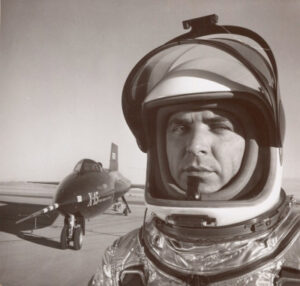
📅 March 7th, 1961
U.S. Air Force Major Robert M. White made history by becoming the first pilot to exceed Mach 4, flying the legendary North American X-15 rocket plane to an astounding Mach 4.43 (2,905 mph).
✈️ What Made This Flight Historic?
This was more than just a milestone in speed—it was a pivotal moment that:
✅ Pushed the boundaries of human flight performance
✅ Opened the door to space exploration
✅ Informed the development of future supersonic and hypersonic aircraft
White’s flight proved that sustained, controlled flight at extreme speeds was possible, laying the groundwork for everything from modern jet aircraft to orbital space missions.
🔍 The X-15 Rocket Plane
The X-15 program was a collaboration between NASA, the U.S. Air Force, and North American Aviation. Designed to explore the upper limits of flight, the X-15:
- Reached speeds over Mach 6.7
- Flew to altitudes of over 50 miles
- Collected vital data used in the design of spacecraft and future high-speed aircraft
It became one of the most important research aircraft in aerospace history, with pilots like Robert White paving the way for the Mercury, Gemini, and Apollo programs.
🌌 Legacy of Mach 4
Breaking Mach 4 was a bold leap forward in 1961—and it still inspires engineers and pilots today. The lessons learned from the X-15 live on in everything from the Space Shuttle to modern hypersonic vehicles.
Would you dare to fly at Mach 4?
Let us know your thoughts in the comments—then keep exploring the frontiers of flight.
How Fast Would the SR-71 Blackbird Reach the Moon?
The SR-71 Blackbird, one of the fastest jets ever built, could reach speeds of Mach 3.3 (around 2,200 mph). But what if it could fly
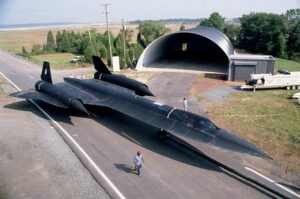 straight to the Moon?
straight to the Moon?
The Numbers Behind the Journey
- Distance from Earth to Moon: ~238,900 miles
- Speed of the SR-71: ~2,200 mph
If an SR-71 could sustain top speed all the way to the Moon (ignoring fuel limitations, air resistance, and lack of atmosphere):
238,900 miles ÷ 2,200 mph = ~109 hours (~4.5 days)
Of course, the SR-71 wasn’t built for space travel, and real spacecraft like the Apollo missions reached the Moon in about three days with speeds over 24,000 mph. Still, the SR-71’s speed remains legendary in aviation history!
Blog post 4
How Do Fighter Jets Refuel Mid-Air Without Stopping?
Military jets like the F-22 Raptor and B-2 Spirit can refuel in mid-air, allowing them to extend their missions without landing. But how does this complex maneuver work at speeds over 300 mph?
Two Methods of Aerial Refueling
- Boom Refueling (Used by U.S. Air Force Jets)
- A tanker aircraft (like the KC-135) extends a rigid boom, which an operator manually guides into the receiving jet’s refueling port.
- Fuel is pumped quickly, allowing the receiving aircraft to refuel in just a few minutes.
- Probe-and-Drogue Refueling (Used by Navy and NATO Jets)
- A flexible hose with a basket-like “drogue” extends from the tanker.
- The receiving jet maneuvers a refueling probe into the drogue to connect and take in fuel.
- This system allows multiple jets to refuel at once but is slower than boom refueling.
Challenges of Aerial Refueling
- Pilots must hold perfect formation while connecting to the tanker.
- Any sudden movement can cause the refueling system to disengage or even damage the aircraft.
- In combat zones, refueling aircraft operate in designated safe zones, protected by fighter escorts.
Aerial refueling is a game-changer in modern air combat, enabling fighter jets to stay airborne for hours without landing!
Blog post 5
What Would Happen If a Plane Flew Too High?
Commercial jets like the Boeing 787 typically cruise at 35,000–40,000 feet, but what if a plane tried to fly much higher?
The Limits of Altitude
Planes rely on air density for both engine performance and lift generation:
- Engines Need Oxygen: Jet engines require oxygen for combustion. At very high altitudes, the air is too thin to support efficient fuel burning.
- Wings Need Air Pressure: Lift is generated when air flows over the wings. As altitude increases, air pressure drops, reducing the plane’s ability to stay aloft.
Maximum Operating Altitude
Every aircraft has a service ceiling, the highest altitude at which it can maintain level flight.
- Boeing 747: ~45,000 feet
- F-22 Raptor: ~65,000 feet
- U-2 Spy Plane: ~70,000+ feet
- SR-71 Blackbird: 85,000 feet (pushing the limits of air-breathing flight)
Beyond this, an aircraft would reach its “coffin corner”—a dangerous altitude where the stall speed and maximum speed converge, making the plane extremely difficult to control.
For space travel, rockets like SpaceX’s Starship are designed to operate entirely in the vacuum of space, where aerodynamic lift is no longer needed!
✈️ Breaking the Sound Barrier Again: Meet Boom
Supersonics’ XB-1
The golden age of supersonic flight is making a comeback—cleaner, faster, and smarter than ever. With the unveiling of its experimental demonstrator, XB-1, Boom Supersonic is poised to reshape the future of commercial air travel.
Imagine flying from New York to London in just 3.5 hours, all while significantly reducing your carbon footprint. This isn’t science fiction—it’s the next chapter of high-speed aerospace innovation.
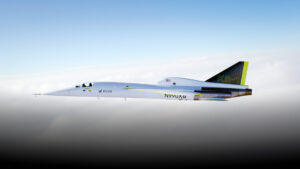
🚀 Introducing the XB-1 Supersonic Demonstrator
Known as the “Baby Boom,” the XB-1 is a scaled prototype designed to validate technologies and aerodynamic principles that will power Boom’s flagship supersonic airliner, the Overture.
Key Features of XB-1:
-
🔹 Speed: Designed for Mach 1.7 (approximately 1,300 mph)
-
🔹 Power: Equipped with three General Electric J85 engines
-
🔹 Size: 71 feet long, featuring a sleek carbon-composite airframe
-
🔹 Sustainability: Runs entirely on 100% sustainable aviation fuel (SAF)
-
🔹 Design: Optimized for low drag, high aerodynamic efficiency, and stable supersonic performance
The XB-1 recently completed ground testing and is now preparing for its first flight—marking the first independently developed supersonic jet since the Concorde era.
🌱 Supersonic, But Sustainable
One of the most groundbreaking aspects of the XB-1 is its commitment to sustainability. Unlike the Concorde, which was notorious for high fuel consumption and environmental impact, Boom is prioritizing green flight from the ground up.
Using SAF not only reduces lifecycle emissions by up to 80%, but it also sets the tone for a future where speed and environmental responsibility are no longer at odds.
🛫 Paving the Way: Boom Overture
The XB-1 is just the beginning. Its ultimate purpose is to validate the technology that will drive Boom’s commercial airliner, Overture, projected to fly by the early 2030s.
Overture will:
With customers already including United Airlines and interest from the U.S. Air Force, Boom is building not just an aircraft—but a new era in aviation.
🔧 Why It Matters
The XB-1 represents more than a return to speed—it’s a redefinition of aerospace possibility. For engineers, scientists, and aviators, it showcases:
-
The return of high-speed civil flight
-
Major advancements in materials science and fluid dynamics
-
Viable paths to net-zero aviation through fuel and design innovations
This isn’t just about flying faster—it’s about flying smarter, cleaner, and with purpose.
🌍 The Future of Flight Is Supersonic—Again
With XB-1 preparing to take flight and Overture on the horizon, Boom Supersonic is leading a renaissance in aerospace engineering. For those passionate about pushing boundaries and rewriting what’s possible in the sky, this is a front-row seat to history in the making.
Stay tuned—because the sonic boom is coming back, and this time, it’s bringing the future with it.
Why Do Airports De-ice the Wings on a Plane?
If you’ve ever flown in winter, you may have noticed crews spraying aircraft wings with a special fluid before takeoff. This process,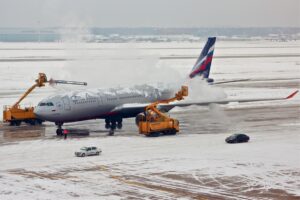 known as de-icing, is crucial for flight safety. Ice buildup on a plane’s wings can interfere with aerodynamics, reducing lift and increasing drag. If left untreated, it can lead to dangerous flight conditions, including difficulty maintaining altitude or even a stall. That’s why airports ensure aircraft are free of ice before departure.
known as de-icing, is crucial for flight safety. Ice buildup on a plane’s wings can interfere with aerodynamics, reducing lift and increasing drag. If left untreated, it can lead to dangerous flight conditions, including difficulty maintaining altitude or even a stall. That’s why airports ensure aircraft are free of ice before departure.
What Do They Use to De-ice the Plane?
To remove ice, crews use de-icing fluid, a heated liquid mixture of glycol and water. This solution quickly melts any ice or snow on the aircraft. In extremely cold conditions, a second treatment with anti-icing fluid (often containing additional additives) prevents new ice from forming before takeoff. These fluids are designed to protect critical surfaces long enough for the aircraft to get airborne, where natural airflow and engine heat prevent further icing.
How Does Ice on a Wing Affect Its Flight?
Aircraft wings are carefully designed to generate lift, which keeps the plane in the air. Ice accumulation disrupts this by changing the wing’s shape and adding roughness to the surface, reducing its ability to produce lift. It can also increase drag, making it harder for the plane to maintain speed and altitude. In extreme cases, ice can block critical control surfaces, making it difficult for pilots to maneuver the aircraft. That’s why de-icing is not just a precaution—it’s a necessity for safe flight.
✈️ Next time you see a plane getting de-iced, you’ll know it’s all about keeping your flight safe and smooth!


 Orbit
Orbit






 known as
known as 